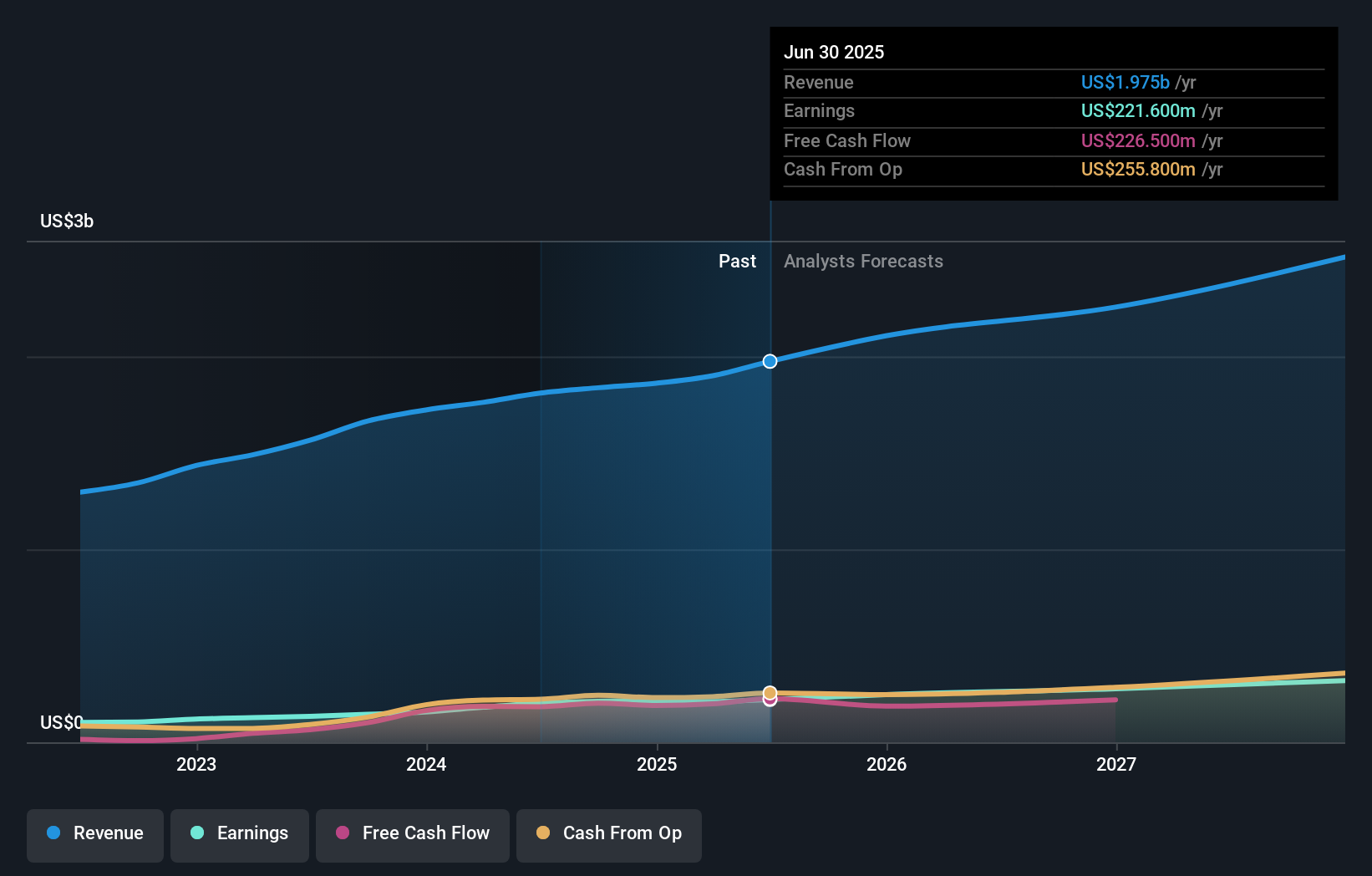
A week ago, Federal Signal Corporation (NYSE:FSS) came out with a strong set of second-quarter numbers that could potentially lead to a re-rate of the stock. Results were good overall, with revenues beating analyst predictions by 5.1% to hit US$565m. Statutory earnings per share (EPS) came in at US$1.16, some 9.7% above whatthe analysts had expected. This is an important time for investors, as they can track a company's performance in its report, look at what experts are forecasting for next year, and see if there has been any change to expectations for the business. So we gathered the latest post-earnings forecasts to see what estimates suggest is in store for next year.

Taking into account the latest results, the current consensus from Federal Signal's seven analysts is for revenues of US$2.11b in 2025. This would reflect an okay 6.7% increase on its revenue over the past 12 months. Per-share earnings are expected to rise 9.8% to US$4.00. In the lead-up to this report, the analysts had been modelling revenues of US$2.05b and earnings per share (EPS) of US$3.82 in 2025. It looks like there's been a modest increase in sentiment following the latest results, withthe analysts becoming a bit more optimistic in their predictions for both revenues and earnings.
View our latest analysis for Federal Signal
It will come as no surprise to learn that the analysts have increased their price target for Federal Signal 19% to US$132on the back of these upgrades. It could also be instructive to look at the range of analyst estimates, to evaluate how different the outlier opinions are from the mean. Currently, the most bullish analyst values Federal Signal at US$145 per share, while the most bearish prices it at US$110. Even so, with a relatively close grouping of estimates, it looks like the analysts are quite confident in their valuations, suggesting Federal Signal is an easy business to forecast or the the analysts are all using similar assumptions.
One way to get more context on these forecasts is to look at how they compare to both past performance, and how other companies in the same industry are performing. The period to the end of 2025 brings more of the same, according to the analysts, with revenue forecast to display 14% growth on an annualised basis. That is in line with its 13% annual growth over the past five years. By contrast, our data suggests that other companies (with analyst coverage) in a similar industry are forecast to see their revenues grow 4.3% per year. So although Federal Signal is expected to maintain its revenue growth rate, it's definitely expected to grow faster than the wider industry.
The Bottom Line
The biggest takeaway for us is the consensus earnings per share upgrade, which suggests a clear improvement in sentiment around Federal Signal's earnings potential next year. Happily, they also upgraded their revenue estimates, and are forecasting them to grow faster than the wider industry. We note an upgrade to the price target, suggesting that the analysts believes the intrinsic value of the business is likely to improve over time.
Keeping that in mind, we still think that the longer term trajectory of the business is much more important for investors to consider. At Simply Wall St, we have a full range of analyst estimates for Federal Signal going out to 2027, and you can see them free on our platform here..
It might also be worth considering whether Federal Signal's debt load is appropriate, using our debt analysis tools on the Simply Wall St platform, here.
Have feedback on this article? Concerned about the content? Get in touch with us directly. Alternatively, email editorial-team (at) simplywallst.com.
This article by Simply Wall St is general in nature. We provide commentary based on historical data and analyst forecasts only using an unbiased methodology and our articles are not intended to be financial advice. It does not constitute a recommendation to buy or sell any stock, and does not take account of your objectives, or your financial situation. We aim to bring you long-term focused analysis driven by fundamental data. Note that our analysis may not factor in the latest price-sensitive company announcements or qualitative material. Simply Wall St has no position in any stocks mentioned.